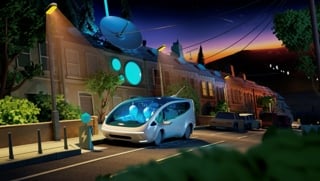The car retail sector has been hit hard since the outbreak of the COVID-19 pandemic.
On top of this, months of lockdowns have had a profound impact on the way we shop, effectively compressing a decade’s worth of changes in consumer behaviour into a few months.
Despite the many challenges that lie ahead for the sector, there are reasons to be cautiously optimistic.
As pent-up consumer demand promises to boost sales, dealers must be prepared to take advantage.
As consumers start spending the money many of them have saved during lockdown, pent-up consumer demand can be expected to boost sales.
The most successful dealerships have adapted to service remote demand and, in the process, kept employees safe and positioned themselves to take advantage of any future trends.
EV opportunities
Part of the opportunity will be in satisfying the increasing demand for EVs.
EY forecasts suggest that the electric revolution is now fully underway, with hybrid, plug-in and BEVs forecast to account for approximately 53% of all sales by 2025.
Successful retailers are already repositioning their businesses for all aspects of the electric vehicle market – new, used and aftermarket.
Doing this also means developing value-added services that drive retention and upsell on the back of connected vehicle and remote diagnostics data.
These value-adds will be vital. EY currently sees average servicing and maintenance costs for electric vehicles track ca.19% below combustion engine driven vehicles.
The pandemic is putting pressure on cash and capital as retailers contend with everything from falling sales to higher COVID-19 related costs.
Making sure that the funding is in place to see businesses through the most difficult time is clearly a key concern.
Reviewing their exposures and aware of sector-related challenges, lenders are demanding business plans that point towards long-term viability, even to secure short-term funding.
Shifting up a gear – accelerating performance
Auto retailers will need to reassess their sales footprint and adapt it to evolving customer needs.
This will not only include ‘right-sizing’ their asset base by closing unprofitable sites but also embracing new sales formats, be it smaller, more temporary sales outlets or ones that focus on experience rather than sales.
Many auto retailers have been quick to ramp up their digital offering to cope with COVID-19 restrictions, introducing click-and-collect offers, home deliveries and virtual walk arounds.
The next logical step is to join online and offline by integrating digital front and back-end processes between OEMs and car dealers so that customers enjoy a seamless experience.
For many, this integration is well underway, but there is significant differentiation in the market and plenty of opportunity for those lagging behind to catch-up or even leap-frog ahead.
The shift to digital and the drive for greater efficiency means reskilling and reassigning staff roles for digital sales models and leaner operations. Intelligent automation can also play a key role by accelerating operational improvements through leveraging data and analytics.
Market pressures are also putting some financially stronger dealers in a position to expand their networks and consolidate.
Those who have already adapted to the new realities may consider acquiring locations from brands where market share is falling, and then transforming them with the tried and tested methods successfully used on their existing portfolio.
Driving over the horizon – preparing for the future
The first disruption is the changing nature of vehicle ownership, such as subscription and fractional models.
Whilst PCP is already essentially a form of subscription, more flexible subscription models will bring additional logistical and balance sheet challenges.
These will fundamentally change the auto retailer-customer relationship, historically built around a single private owner. But cars will still need to be sold, traded and serviced.
The challenge for auto retailers is to be able to predict and then meet the new needs of their customers. For example, ‘invisible’ servicing centres may be part of the solution, along with greater home delivery/click-and-collect options and better online capability.
As auto retailers risk losing ownership of the consumer journey, and OEMs’ scale and resources give them an advantage online, new partnership constructs across the ecosystem will be vital.
We are already seeing this in the form of new contractual arrangements with OEMs, in which the dealer takes on the role of the agent for electric vehicles.
The result of this is that customers can switch seamlessly between online and offline channels and order direct from the OEM, with their preferred dealer remaining their local contact.
The push towards agency models, which some OEMs will pursue more aggressively than others, will require dealers to fundamentally rethink their business model and value proposition.
Dealers need to be ready to renegotiate their contracts with OEMs and understand the implications for their P&L, balance sheet, operating model and tax.
With OEMs having the opportunity to build entire new sales and service models as part of this change, dealers will need to be on the front foot to develop and define their role in this changing landscape.
The road ahead
Dealer networks are currently balancing short-term pragmatism with longer-term structural change and innovation. This is likely to require a combination of external funding and internal cost improvements, along with management’s ability to deliver radical change.
But merely following market trends is unlikely to be enough.
Dealers need to think one step ahead to be able to use the anticipated post-lockdown sales recovery to their benefit, be prepared for changes in their relationship to OEMs and take advantage of the radical ways that the continuing growth of electric vehicles will change the market.
Author: Charlie Simpson, EY-Parthenon Partner and UK Future Mobility Lead, Advance Manufacturing and Mobility


















Login to comment
Comments
No comments have been made yet.